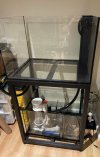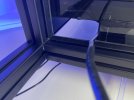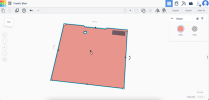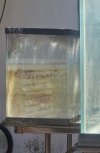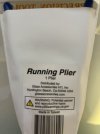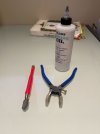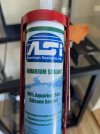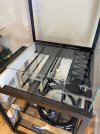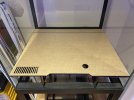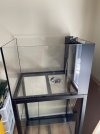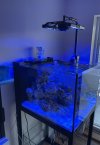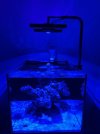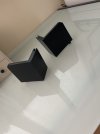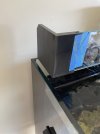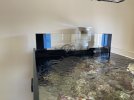You are using an out of date browser. It may not display this or other websites correctly.
You should upgrade or use an alternative browser.
You should upgrade or use an alternative browser.
Elos 70 AIO Conversion Project
- Thread starter nanoguy
- Start date
Test fitting a skimmer my brother hooked me up with. My original plan was to remove the overflow portion of the tank and silicone a piece of glass to the rectangular opening at the bottom corner. This will give me more real estate in the AIO chamber to play with. I removed the finishing "plastic sheet" that covered the overflow to see what I was working with. After closer inspection, I decided against this because I didn't feel like I would be able to create a good seal due to the existing silicone in that area of the opening.
Attachments
I took some measurements and sketched out how I was going to go about doing the AIO baffles. I started designing the the acrylic panel with the overflow weir/return in Tinkercad. Srt4eric answered my post requesting for a "crusty old tank" and crusty it was.The glass from this tank will be used for the baffles in the AIO chamber.
Attachments
Last edited:
I ordered a lower end Toyo glass cutter, cutting oil, and a running plier used to "snap" the glass at the cut line (a must have tool IMO). This was my first time attempting to cut glass and there was a steep learning curve for me. I ruined quite a few pieces, but luckily there was enough glass to make up for all my mistakes.
Attachments
The acrylic sheet needed for this project was going to set me back around $60-$65 and I would have to make all the cuts myself. I decided to source it out to Ponoko (https://www.ponoko.com). All you have to do is upload the appropriate file and they do the rest. Total cost for me came out to a tad over $116 tax and shipping included...not too shabby. Turn around time was around 3 weeks. The test fit turned out perfect so onto siliconing it into place. I applied a 3m Wrap to the side of the tank to cover up the AIO chambers.
Attachments
I let the silicone cure for close to a week prior to filling the tank. I was super anxious to test the layout of the AIO baffles for the first time. Up to this point, it only worked on the primitive sketch I doodled on a piece of paper. I wasn't really sure if the AIO chambers would function properly. All went better than expected...super stoked at this point. I was able to max out my return pump (Jebao Jecod DXP-2500) without running the return chamber dry and had no micro bubbles from the skimmer entering the display (moved the skimmer into display to make some adjustments when I took the pic).
Attachments
Last edited:
I tossed one of the rock structures from my 150 into this AIO. I think it looks pretty good as is, but might add a rock or two more to have the structure to really break the surface of the water...maybe. I'm currently running a Kessil a360x tuna blue w/ Reefbrite. My par meter readings with this setup sits around 87-90 at the sand bed and around 230 off one of the overhangs. I'm going to just run this for now until I decide what I will ultimately place in this tank.
Attachments
Last edited:
I was able to find a good use for the decommissioned overflow...MP40 dry end placement. The total thickness of the original overflow along with what I added (glass and acrylic) equates to 1" thickness. Needless to say, the motor is far too heavy to be held in place with just the magnetic strength of the dry/wet side. To my surprise, the wetside had no problems staying secured to the glass. I used one of those sticky/zip tie mounts to hold the motor in place. The vortech works as designed with no issues with the wetside falling off...another win.
Attachments
Kensington Reefer
Supporting Member
Thanks for sharing
Found a piece of finished glass in storage this past weekend and decided to see if I can make one of those AIO sump covers...similar to the ones Red Sea have. I drew up the "brackets" that will hold the glass in Tinkercad and sent the file to the 3d printer. I did a test fit to find out I didn't add the measurements from the glass insert/cutouts back to the overall dimensions of the bracket. 6.5 hours of printing and the cost of the resin down the drain. My next print should be good to go.
Attachments
Last edited:


